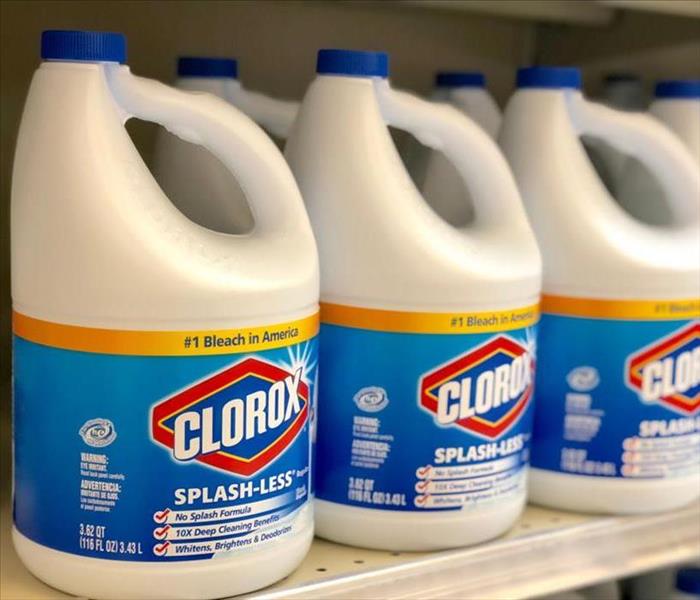3 Reasons Not To Use Bleach To Get Rid of Mold
7/19/2021 (Permalink)
Never Use Bleach To Clean Up Mold
When you think of do-it-yourself methods for fungus cleanup, bleach is probably one of the first methods that come to mind. After all, the bottle says it can kill almost anything, and most people assume that includes mold. Unfortunately, this popular substance often does more harm than good when it comes to mold removal. Here are three reasons why you should never use bleach to clean up mold.
1. It is corrosive. Chlorine bleach contains harsh chemicals that damage almost any surface with which it comes into contact. It breaks down the fibers in wood, rendering it weaker and prone to warping. It begins to corrode metal the moment it touches it. When you use bleach for fungus cleanup in your commercial property in Leonard, OK, it is likely to cause more harm than good.
2. It doesn't work. Bleach is not an effective mold cleaner. It only cleans the surface where the mold can be seen. The chlorine doesn't reach down below the surface where the roots of the fungus are growing. If you can't eliminate the roots, you cannot resolve the problem. It is even possible that using bleach on mold can make it worse by increasing the area's moisture level, given the high percentage of water in the solution.
3. It isn't thorough. Because it only cleans or masks the mold on the surface, bleach does not do a thorough job of remediation. To be absolutely sure the mold problem in your commercial building is taken care of, you need to consult a mold remediation specialist. Specialists don't just wipe the surface down. They contain the problem, clean it, dry it and replace any damaged parts of the building.
As tempting as it may be, it is not a good idea to use bleach to try to clean up the mold. Skip the bottle and go straight to the phone to call professional experts who can help you get rid of your mold problem.



 24/7 Emergency Service
24/7 Emergency Service
